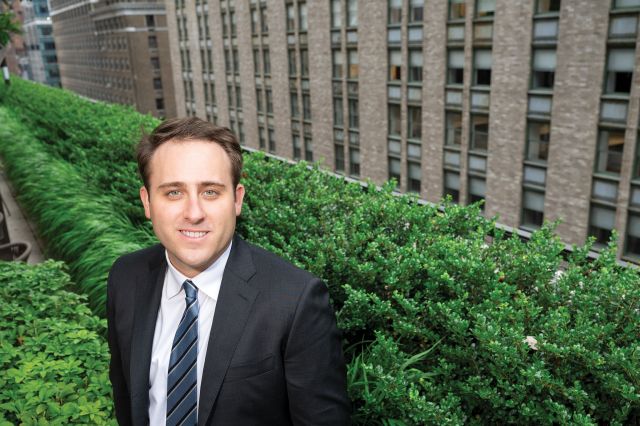
Adam Freindlich, 30
Vice president at MAG Partners

Since Adam Freindlich was from New Jersey and interested in real estate, working for a developer of New Jersey waterfront properties seemed like a pretty good job.
Yet, after three years at Roseland Residential, the Wharton grad went to work at a real estate private equity firm, hoping to learn a different aspect of the business.
After he spent just five days in the office, COVID-19 hit. Freindlich was now relegated to sitting on his couch, trying to bond with his team through online Zoom meetings. So, when the phone rang — and even though the screen said “unknown number” — he answered.
The caller was MaryAnne Gilmartin, a New York real estate legend who had been hired as interim CEO at Mack-Cali, the company of which Roseland was a part. “She wanted to get my take on the people, the company,” Freindlich recalls.
His honesty and forthcoming attitude was enough to impress Gilmartin. She offered him a temporary job two weeks later. Said Freindlich: “It didn’t take that much convincing.”
After the interim gig ended, Freindlich followed Gilmartin to her own development shop, MAG Partners. The firm was wrapping up being awarded a development on the Penn South campus in Chelsea.
And just like that, Freindlich had a great job, one he calls a “master class.” He structures strategic partnerships and manages assets through all phases of investment. In June 2025, the Chelsea multifamily project named Mabel and another MAG Partners project, Anagram Turtle Bay, opened for leasing on the same day.
Across the two projects, Freindlich led efforts in conjunction with firm leadership to secure $169 million of total construction loan financing and $124 million in new equity investment. These commitments represented 83 percent of total project capitalization, sourced from MetLife, Global Holdings, and Bank OZK.
The two projects are each about 200 units, but in other ways they are very different. In contrast to the 23-story tower of Turtle Bay, Mabel is seven stories, built horizontally to stay contextual within the environment south of Penn Station.
“Not just to maximize returns but to build the user-centric neighborhood enhancement,” explained Freindlich. “To enhance the neighborhoods, I think that’s our special sauce.”


